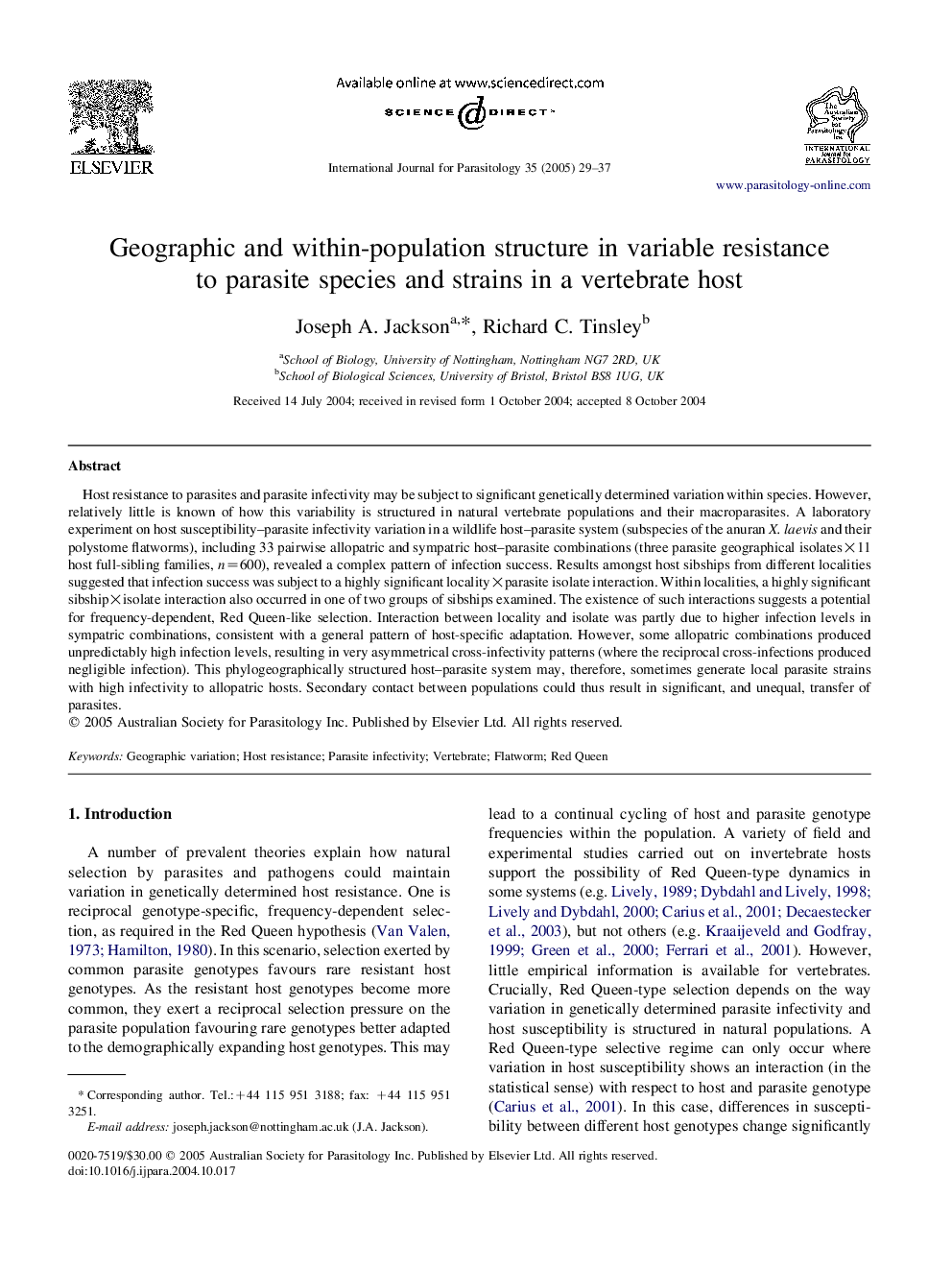| Article ID | Journal | Published Year | Pages | File Type |
|---|---|---|---|---|
| 8980076 | International Journal for Parasitology | 2005 | 9 Pages |
Abstract
Host resistance to parasites and parasite infectivity may be subject to significant genetically determined variation within species. However, relatively little is known of how this variability is structured in natural vertebrate populations and their macroparasites. A laboratory experiment on host susceptibility-parasite infectivity variation in a wildlife host-parasite system (subspecies of the anuran X. laevis and their polystome flatworms), including 33 pairwise allopatric and sympatric host-parasite combinations (three parasite geographical isolatesÃ11 host full-sibling families, n=600), revealed a complex pattern of infection success. Results amongst host sibships from different localities suggested that infection success was subject to a highly significant localityÃparasite isolate interaction. Within localities, a highly significant sibshipÃisolate interaction also occurred in one of two groups of sibships examined. The existence of such interactions suggests a potential for frequency-dependent, Red Queen-like selection. Interaction between locality and isolate was partly due to higher infection levels in sympatric combinations, consistent with a general pattern of host-specific adaptation. However, some allopatric combinations produced unpredictably high infection levels, resulting in very asymmetrical cross-infectivity patterns (where the reciprocal cross-infections produced negligible infection). This phylogeographically structured host-parasite system may, therefore, sometimes generate local parasite strains with high infectivity to allopatric hosts. Secondary contact between populations could thus result in significant, and unequal, transfer of parasites.
Related Topics
Life Sciences
Immunology and Microbiology
Parasitology
Authors
Joseph A. Jackson, Richard C. Tinsley,
